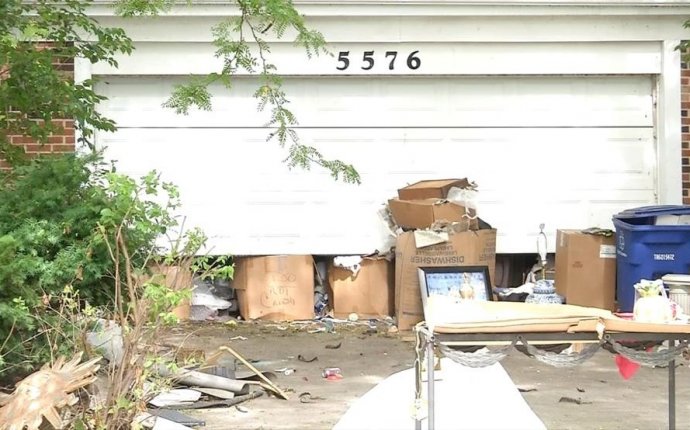
Garbage building
Mitsunobu Okada wants to create the first trash-collection company dedicated to cleaning up some of humanity’s hardest-to-reach rubbish: the spent rocket stages, inert satellites and other debris that have been collecting above Earth
“Let’s face it, waste management isn’t sexy enough for a space agency to convince taxpayers to allocate money, ” said Okada, 43, who put Astroscale’s headquarters in startup-friendly Singapore but is building its spacecraft in his native Japan, where he found more engineers. “My breakthrough is figuring out how to make this into a business.”
Over the last half-century, low Earth orbit has become so littered with debris that space agencies and scientists warn of the increasing danger of collisions for satellites and manned spacecraft. The U.S. Air Force now keeps track of about 23, 000 pieces of space junk that are big enough — about 4 inches or larger — to be detected from the ground.
Scientists say there could be tens of millions of smaller particles, such as bolts or chunks of frozen engine coolant, that cannot be detected from Earth. Even the tiniest pieces move through orbit at speeds fast enough to turn them into potentially deadly projectiles. In 1983, the space shuttle Challenger returned to Earth with a pea-size pit in its windshield from a paint-chip strike.
Plans are being made to make low orbit even busier, and more essential for communications on Earth. Companies like SpaceX and OneWeb are aiming to create vast new networks of hundreds or even thousands of satellites to provide global internet connectivity and cellphone coverage. The growth of traffic increases the risk of collisions that could disrupt communications, as in 2009 when a dormant Russian military satellite slammed into a private U.S. communications satellite, causing brief disruptions for satellite-phone users.
Worse, each strike creates a cloud of shrapnel, potentially setting off a chain reaction of collisions that could render low orbit unusable.
“If we don’t start removing these things, the debris environment will become unstable, ” said William Ailor, a fellow at the Aerospace Corporation, a federally funded research-and-development center in California. “We will continue to have a growing debris population that could affect the ability to operate satellites.”
Enter Okada, a former government official and internet entrepreneur, who said a midlife crisis four years ago prompted him to return to his childhood passion of space. As a teenager in 1988, he flew to Alabama to join the U.S. Space Camp at the U.S. Space and Rocket Center in Huntsville, and later chose to attend business school at Purdue University, the alma mater of his hero, Neil Armstrong.
Later, Okada realized he could use his experience in the startup world — he had founded a software company in 2009 — to get a jump on other space-debris projects.
“The projects all smelled like government, not crisp or quick, ” he said of conferences he attended to learn about other efforts. “I came from the startup world where we think in days or weeks, not years.”
He said he has created a two-step plan for making money from debris removal. First, Astroscale plans to launch a 50-pound satellite called IDEA OSG 1 next year aboard a Russian rocket. The craft will carry panels that can measure the number of strikes from debris of even less than 1 millimeter.
Astroscale will use this data to compile the first detailed maps of debris density at various altitudes and locations, which can then be sold to satellite operators and space agencies, Okada said.
“We need to get revenue at an early stage, even before doing actual debris removal, to prove that we are commercial, as a business, ” said Okada, who added that he had already raised $43 million from investors.
The more ambitious step will come in 2018, when Okada says Astroscale will launch a craft called the ELSA 1. Larger than its predecessor, the ELSA 1 will be loaded with sensors and maneuvering thrusters that will allow it to track and intercept a piece of debris.
The company settled on a lightweight and simple approach to grabbing space debris: glue. Astroscale has worked with a Japanese chemical company to create an adhesive that would cover a flat surface about the size of a dinner plate on the ELSA 1. The craft would bump into a piece of space junk, which would stick to the craft and be dragged out of orbit. Both the ELSA 1 and the debris would burn up on re-entry.
Okada said the key to bringing down a price tag of tens or even hundreds of millions of dollars is to reduce the weight. He said the Elsa 1’s adhesive would weigh just a few ounces, far less than, say, a 100-pound robotic arm, and that his company’s engineers had found ways to bring the spacecraft’s weight down to 200 pounds, making it much lighter than other proposed craft.
“In the U.S., aerospace engineers are more interested in working on missions to Mars, not waste management, ” Okada said. “Japan doesn’t have so many interesting space missions, so engineers were excited by my idea.”









